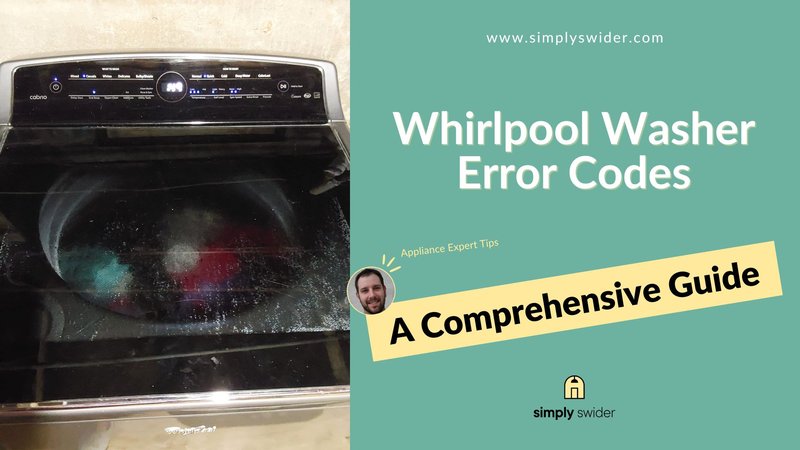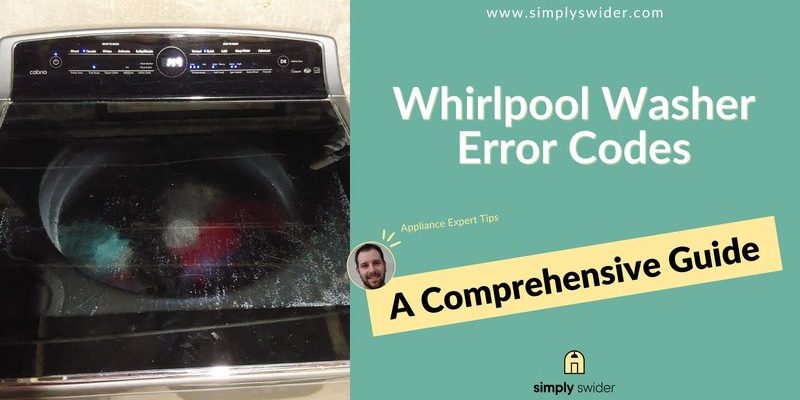
Imagine your washing machine as a small factory, working tirelessly to ensure your clothes come out clean and fresh. For it to function well, all its parts need to work in harmony. When something’s not quite right, it communicates this to you through an error code – like the HE one. The HE error indicates that there’s an issue with the machine’s heating element, which is crucial for heating the water to the desired temperature. In simpler terms, it’s like trying to wash your dishes with cold water; the results just aren’t as effective.
So, what causes this HE error to occur? You might be wondering how stuff like this even happens. Well, washing machines, much like any other household appliance, have their set of quirks and common issues. Let’s dive into some of the typical culprits behind this pesky error and see how you might be able to resolve it without having to become a repair expert overnight.
Understanding the Role of the Heating Element
To get to the root of the HE error, it helps to understand a bit more about the heating element itself. Think of the heating element as the heart of the washing machine when it comes to warming up water. Much like how you need the right temperature for a cozy bath, your washing machine needs to heat water to specified temperatures for different cycles to effectively clean your clothes.
A malfunctioning heating element is like a stove burner that won’t heat up. Without the right temperature, the detergent might not dissolve properly, and your clothes won’t get the thorough cleaning they deserve. An HE error often arises when this component isn’t operating as it should. This could be due to wear and tear over time, or it might stem from power supply issues that prevent the element from heating up.
What’s interesting is that the heating element is usually a robust component, designed to endure the constant demand of heating water cycle after cycle. However, wear and tear isn’t unusual, especially if the washing machine is used frequently or if it’s quite old. In such cases, checking the element for continuity using a multimeter can be helpful, as a break in the circuit may point to the need for a replacement.
If you’ve confirmed that the heating element is the issue, replacing it can often be a DIY task if you’re handy and have the right tools. However, if you’re not comfortable tinkering with electronics, it might be time to call in a professional. This way, you ensure the problem is fixed without inadvertently causing more issues.
Examining Electrical Connections and Wiring
Now, let’s talk about the electrical connections and wiring. Imagine your washing machine as a network of pathways; if one path is blocked or broken, the machine can’t operate smoothly. Similar to how a lamp won’t work if it’s not plugged in or if the cord is frayed, faulty wiring or loose connections can prevent the heating element from receiving power, leading to the dreaded HE error.
One common issue is that the wires connecting the heating element may become loose or damaged over time. This is typically due to the constant vibration and movement of the washing machine during cycles. If these connections become unstable, you might find your machine unable to heat water effectively, triggering the error code.
Inspecting these connections requires a careful approach to ensure your safety. Always unplug the washing machine before attempting any examination. Look for any signs of wear or damage on the wires and ensure that all connections are tight and secure. Sometimes, it might be as simple as tightening a loose screw or replacing a damaged wire. But if wiring seems like a foreign language to you, don’t hesitate to get professional help.
In some cases, where the wiring is intact, the issue might stem directly from the connection points on the heating element or the control board. Either of these components might have a defect, and diagnosing this typically requires professional tools and expertise. Thus, maintaining good wiring and connections not only keeps your washing machine in top shape but also ensures your appliance is safe to use.
Dealing with Faulty Thermostats and Control Boards
You might be thinking, “What else could be causing this problem?” Another common issue can be related to faulty thermostats or control boards. These components are like the brain of your washing machine, making critical decisions about when to heat the water and how hot it needs to get. If they aren’t working correctly, you can be left scratching your head over an HE error code.
Let’s break it down: the thermostat controls the temperature of the water. If it’s faulty, it might not signal the heating element to warm up, or it might not detect when the water has reached the desired temperature. In contrast, the control board oversees the entire operation, sending signals to various parts of the machine. A malfunctioning control board can lead to a communication breakdown, causing the machine to falter in its duties.
Testing and replacing these components can be a bit more complex than dealing with the heating element or wiring. It usually involves accessing the machine’s internal components and using a multimeter to test for continuity and function. If you’re not sure what you’re doing, it’s best to hire a professional technician. They can diagnose the issue accurately and provide the necessary fixes without you having to guess.
Maintaining a regular check on your washing machine’s components will help you spot potential issues before they escalate. It’s like taking your car for regular servicing; a bit of proactive care can save you from unexpected breakdowns and costly repairs. So, keeping an eye on your machine’s performance and addressing issues promptly is always a smart move.
Final Thoughts and Preventative Measures
Dealing with an HE error in your Whirlpool washing machine might seem daunting at first, but understanding the possible causes can make tackling the issue a lot simpler. From the crucial heating element to the intricate wiring and sophisticated control boards, each plays a vital role in ensuring your machine functions properly. By identifying these aspects, you’re one step closer to diagnosing the problem and finding a solution.
So, what can you do moving forward to prevent these errors? Regular maintenance is key. Make it a habit to check your washing machine’s components now and then. Look out for unusual sounds, leaks, or any other signs of wear and tear. This proactive approach is much like keeping an eye on your car’s mileage and oil levels – it helps you catch small issues before they turn into major headaches.
If you ever find yourself in doubt or if the problem persists despite your best efforts, reaching out to a professional can save you time, effort, and possibly the cost of major repairs or replacements down the line. Sometimes, having an expert give your machine a once-over can provide peace of mind and ensure that everything is running smoothly.
Remember, your washing machine is an investment in your home, much like any other appliance. By taking care of it and addressing issues like the HE error with informed decisions, you ensure it remains reliable for years to come. So next time you see that error code blinking at you, you’ll know just what to do!
